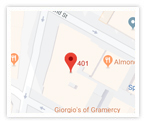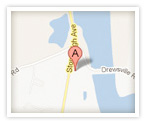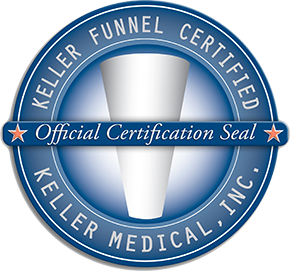Dr. Greenwald, a renowned Westchester County, NY breast implants provider, provides the following information to help patients gain a better understanding of their breast augmentation options. Dr. Greenwald also offers breast surgery procedures for breast reduction, breast lift and breast reconstruction patients.
There are currently three basic types of breast implants for breast augmentation and breast reconstruction surgery. All implants used in the United States for breast augmentation and breast reconstruction are made of silicone, saline or a combination of silicone and saline. On November 17, 2006, the U.S. food and drug administration (FDA) approved the use of silicone gel-filled breast implants for breast reconstruction in women of all ages and for breast augmentation in women ages 22 and older. Silicone-gel breast implants made by Mentor Corporation and Allergan Corporation received this approval after the FDA reviewed an extensive amount of data from clinical trials of women studied for up to four years, as well as a wealth of other information to determine the benefits and risks of these products. Daniel Schultz, M.D., Director, Center for Devices and Radiological Health, FDA said, “The extensive body of scientific evidence provides reasonable assurance of the benefits and risks of these devices. This information is available in the product labeling and will enable women and their physicians to make informed decisions.”
Prior to the FDA approval of silicone-gel filled implants, saline breast implants were the only implants available for use in the United States for cosmetic breast augmentation. Saline breast implants are composed of a silicone shell or cover that is filled with sterile saline. Women over the age of 22 now have a choice when selecting the type of implant they desire when choosing to have breast augmentation surgery.
If you are considering breast augmentation in New York, below are some of the more frequently asked questions about silicone and saline breast implants:
What is saline?
Saline solution is a solution of sodium chloride (ie NaCl) in sterile water. A saline-filled breast implant consists of a silicone shell or cover that is filled with sterile saline to the desired volume during breast augmentation surgery.
What if my saline implant ruptures?
Rupture of a saline breast implant is in reality a slow leak of saline through an unsealed or damaged valve or through a break in the silicone shell. Implant deflation usually occurs over a period of several days. Saline breast implants may leak for a variety of reasons including damage during insertion at the initial operation, failure to seal the fill valve appropriately and over or under-filling the implant. Excessive compression from trauma and even during mammography may also cause the integrity of the implant to be lost. If your implant is leaking, the saline solution is harmless and is absorbed by your body. The ruptured implant can be easily replaced under local anesthesia provided the procedure is done in a timely fashion.
What is silicone?
“Silicone is derived from silicone, a semi-metallic or metal-like element that in nature combines with oxygen to form silicone dioxide, or silica. Beach sand, crystals, and quartz are silica. Silica is the most common substance on earth. Heating silica with carbon at a high temperature can produce silicone. Further processing can convert the silicone into a long chemical chain, or polymer, called silicone – which can be a liquid, a gel, or a rubbery substance. Various silicones are used in lubricants and oils, as well as in silicone rubber. Silicone can be found in many common household items, such as polishes, suntan and hand lotion, antiperspirants, soaps, processed foods, waterproof coatings, and chewing gum.” {Courtesy of mentorcorp.com.}
Do silicone breast implants place me at an increased risk for breast cancer?
This topic has been the subject of numerous studies. The largest study was conducted by the National Cancer Institute (NCI). The NCI studied more than 13,000 women who had cosmetic breast augmentation with silicone-filled breast implants prior to 1989.Researchers found no significant increase in breast cancer incidence and mortality in patients with silicone breast implants and women without implants. Details of the study can be found at www.nci.nih.gov/newscenter/siliconefactsheet.
Is there any link with connective tissue diseases and silicone breast implants?
This has also been the topic of numerous studies to help determine the safety of silicone breast implants. In 1997, the Department of Health and Human Services began one of the most extensive research studies in medical history by appointing the Institute of Medicine of the National Academy of Science (IOM) to examine potential complications during or after surgery.
The IOM consisted of a 13-member volunteer committee, including six women. The committee was composed of members of the medical, scientific and educational communities with experience in radiology, women’s health, neurology, oncology, silicone chemistry, rheumatology, immunology, epidemiology, internal medicine and plastic surgery. No IOM members had on-going relationships or conflicts of interest related to any implant lawsuits.
The result: After reviewing years of evidence and research concerning silicone gel-filled breast implants, the IOM found that “Evidence suggests diseases or conditions such as connective tissue diseases, cancer, neurological diseases or other systemic complaints or conditions are no more common in women with breast implants than in women without implants.”
What if my silicone implant ruptures?
Silicone breast implant rupture is usually silent in contrast to a saline breast implant rupture where you will see a gradual loss of volume in the affected breast. In most instances, neither you nor your plastic surgeon will know if your implant shell has lost its integrity. This is one of the reasons the FDA has approved silicone-gel implants with the understanding that an MRIs be performed 3 years after surgery and then every 2 years. If a rupture is detected using this modality, changing the implant and removal of all silicone gel is recommended. Allergan reported a 2.7% rupture rate at 4 years with no gel migrating outside of the breast in primary augmentation patients. Mentor reported a 3 year rupture rate of .5% in primary breast augmentation patients.
Who is eligible to choose silicone breast implants?
Women must be 22 years of age or older may choose to use silicone breast implants for breast augmentation. Patients undergoing breast reconstruction may also choose to use silicone filled implants made by Mentor or Allergan. Silicone breast implants may not be used in women with an active infection or untreated breast disease. Silicone breast implants should not be placed in pregnant or nursing women. Silicone breast implants have not been studied in patients with autoimmune diseases such as lupus and scleroderma.
What are some of the advantages of silicone breast implants?
Silicone breast implants feel lighter in weight than the same sized saline breast implant. With that being said, if you place a 275 cc silicone breast implant and a 275 cc saline breast implant on a scale, they weight the same. Silicone breast implants feel more natural than their saline counterparts. Silicone implants also have less of a tendency to show rippling than saline breast implants particularly inferiorly and laterally where submuscular coverage of any type of breast implant is most difficult. The shell of a silicone implant does not ripple as easily as the shell of a saline implant due to the presence of the cohesive gel. The visibility of rippling is particularly important in very thin patients as they have very little soft tissue coverage of their implants. Aside from the possibility of visible rippling and a more natural feel, once inserted, silicone and saline breast implants do look the same. Photographs posted on this site are all of patients who have had saline breast implants (Photos of patients with gel implants would appear identical and will be posted when patients are at least 6 months out from surgery). During your consultation in our New York office, you will have the opportunity to handle both silicone and saline implants of various sizes.
What are the main advantages of saline breast implants?
The main advantage of saline implants is that the incision required to place a saline implant can be much smaller than that required to place a silicone breast implant. A 350 cc saline breast implant can be easily placed through a 2.5 cm inframammary crease incision. A similar sized silicone breast implant usually requires an incision 4 cm in length to avoid undue trauma to the implants during insertion.
What is the difference between smooth and textured implants?
Textured implants were devised to decrease the rate of capsular contracture. Textured implants have shown a decrease in capsular contracture when placed in the subglandular position. This decrease in capsular contracture in the subglandular position is at the expense of an increased incidence of visible rippling. Textured implants have not been shown to decrease capsular contracture when placed under the pectoralis muscle. Textured implants have a slightly higher deflation rate than smooth implants and also cost slightly more than their smooth counterparts. As Dr. Greenwald places most implants in the subpectoral position, smooth implants are his implant of choice. Textured implants may be used in corrective or revision breast augmentation cases.
What is the difference between moderate and high profile implants?
A high profile implant has a greater anterior projection and narrower diameter for a given volume than a moderate profile implant of the same volume. For example, a 350 cc high profile silicone gel implant has an anterior projection of 4.8 cm and a diameter of 11.7 cm. A 350 cc moderate profile silicone implant has an anterior projection of 3.1 cm and a diameter of 14.2 cm. High profile implants are very useful in very thin, narrow women who desire a significant increase in breast size as well as those women who desire significant anterior projection.
How will I know what size implant I want?
Prior to your consultation, you will be encouraged to bring in photographs of the breast shape and size you desire. During your consultation, before and after photographs of numerous breast augmentation patients will be reviewed. Sample implants of various sizes will be available for you to handle and “try on”. Dr. Greenwald will also carefully examine your breasts and measure their base diameter. Based on your preferences from the reviewed photographs and the information gathered on your examination, Dr. Greenwald will make his recommendations as far as implant size, implant type and incision placement.









